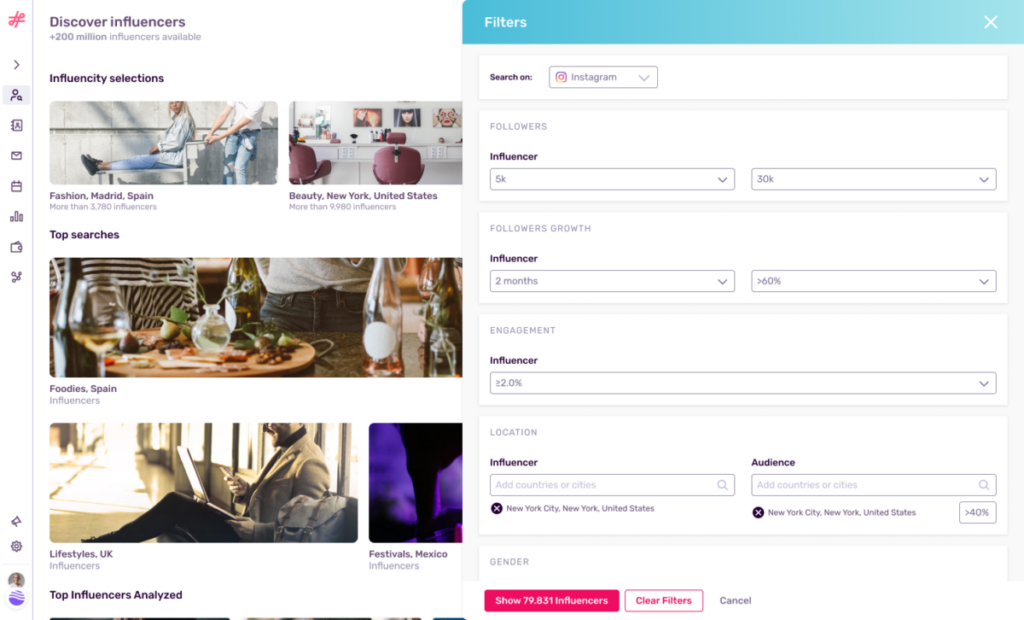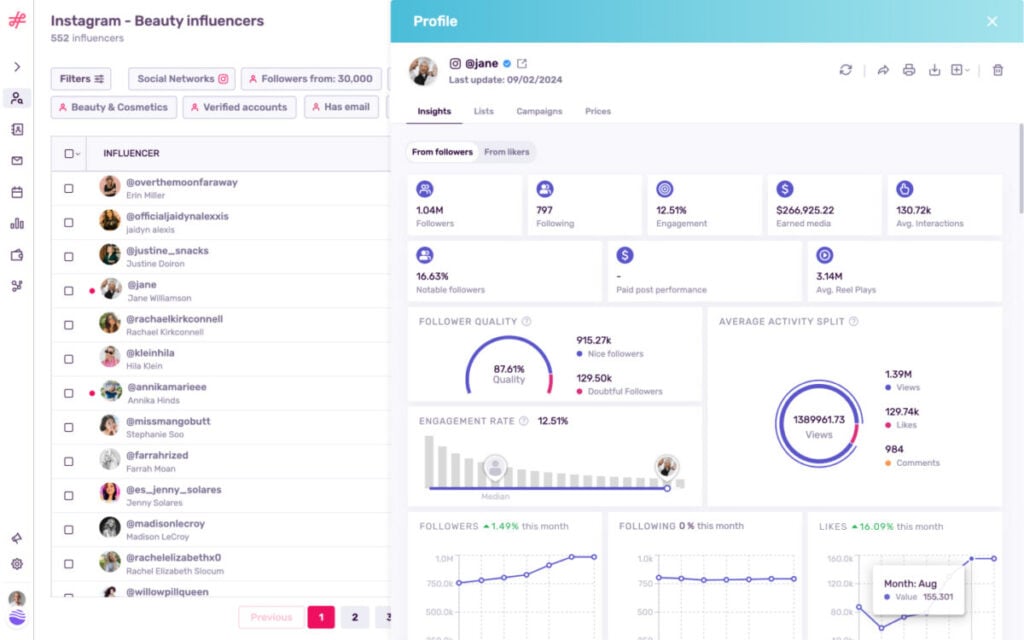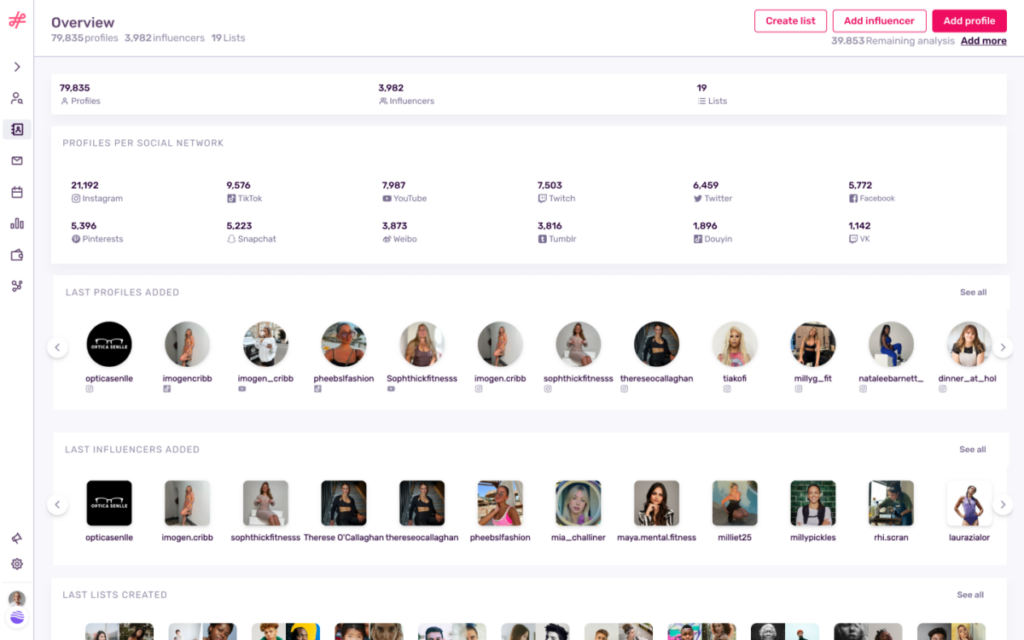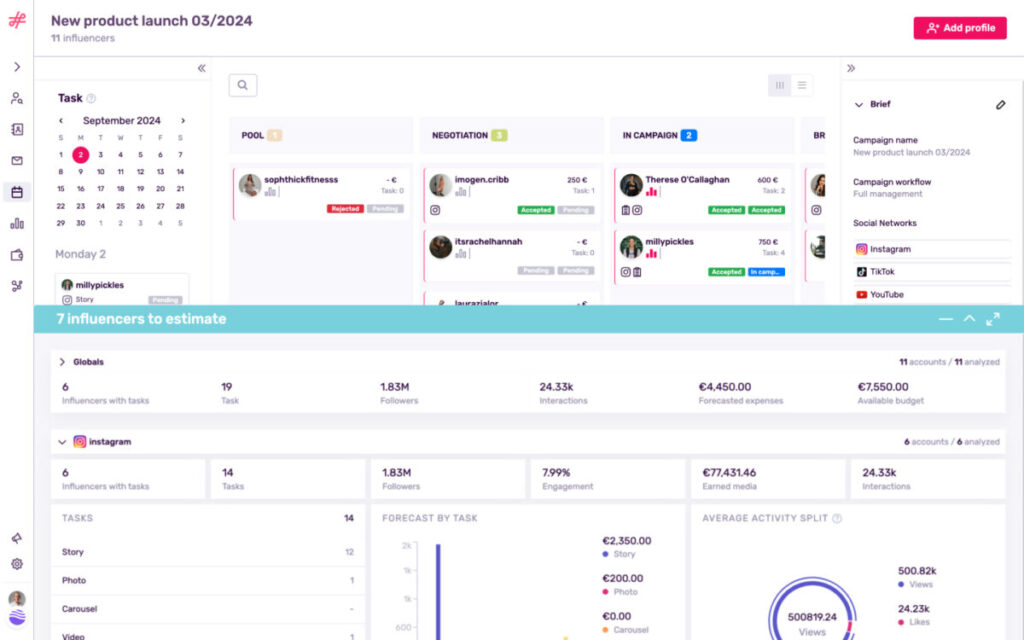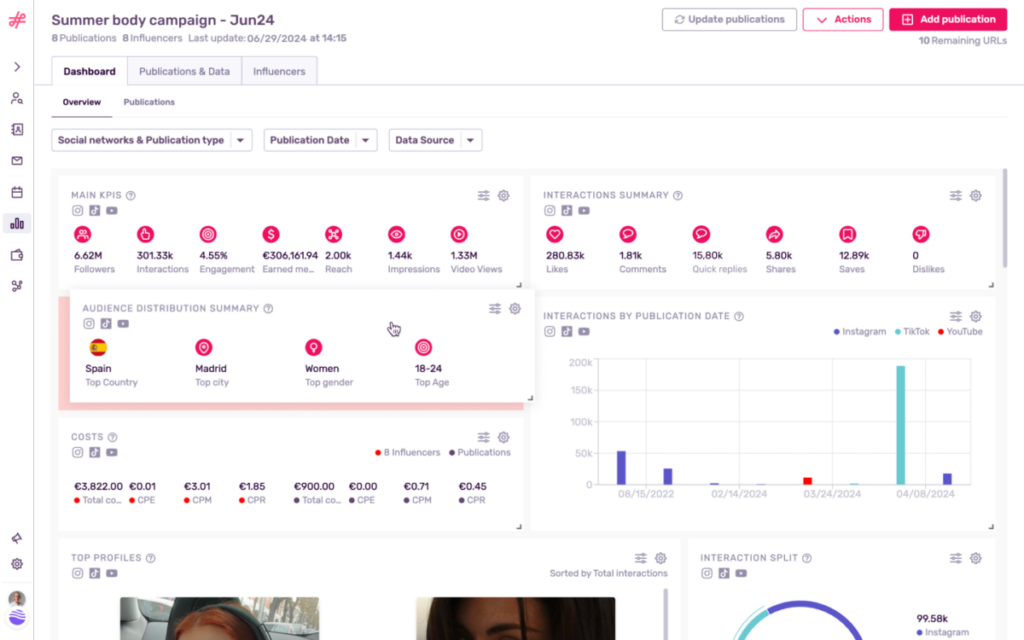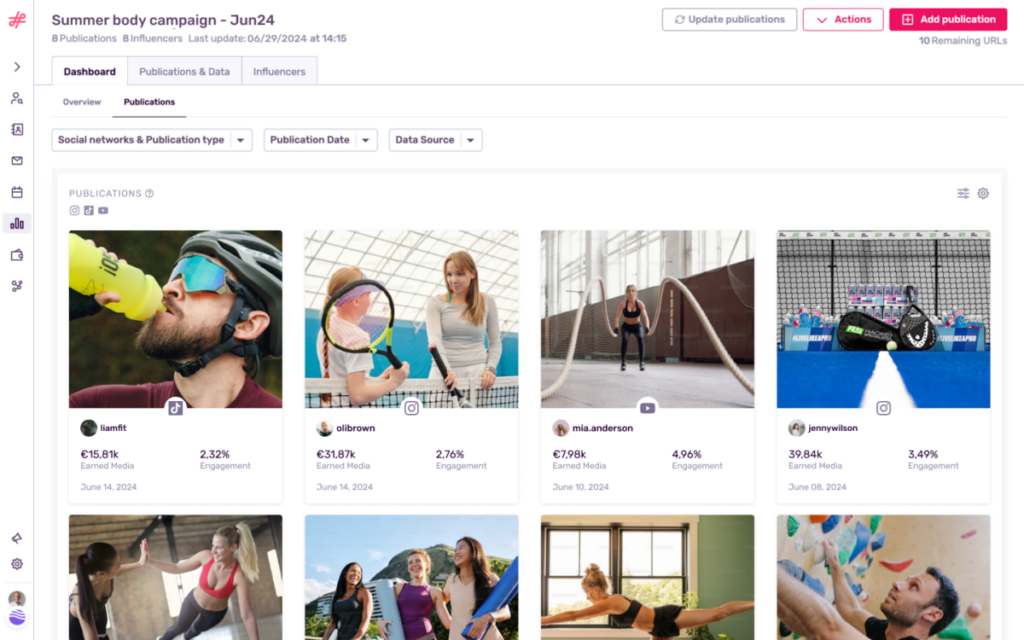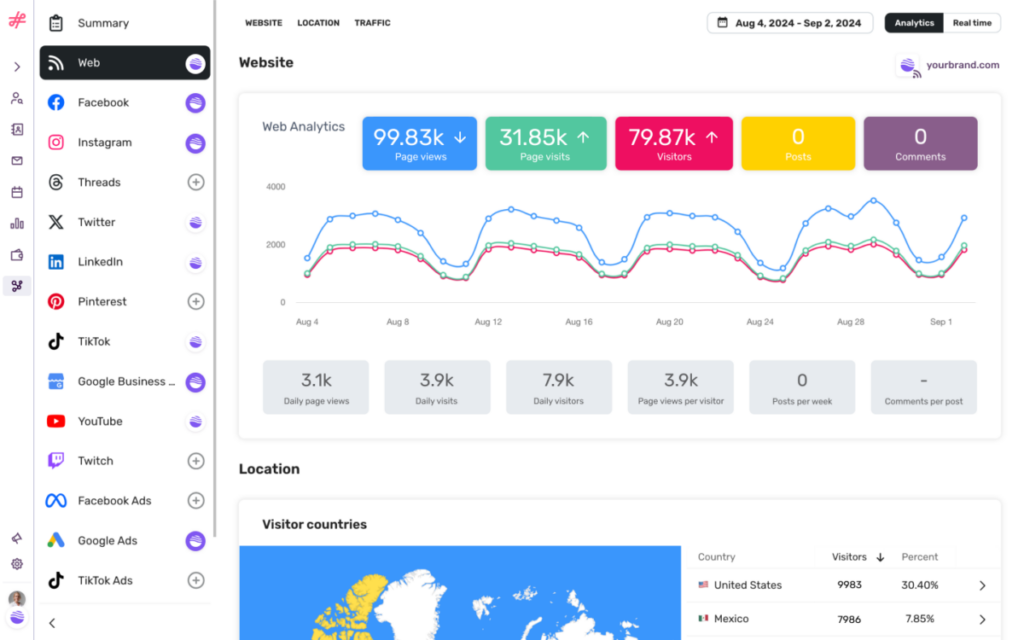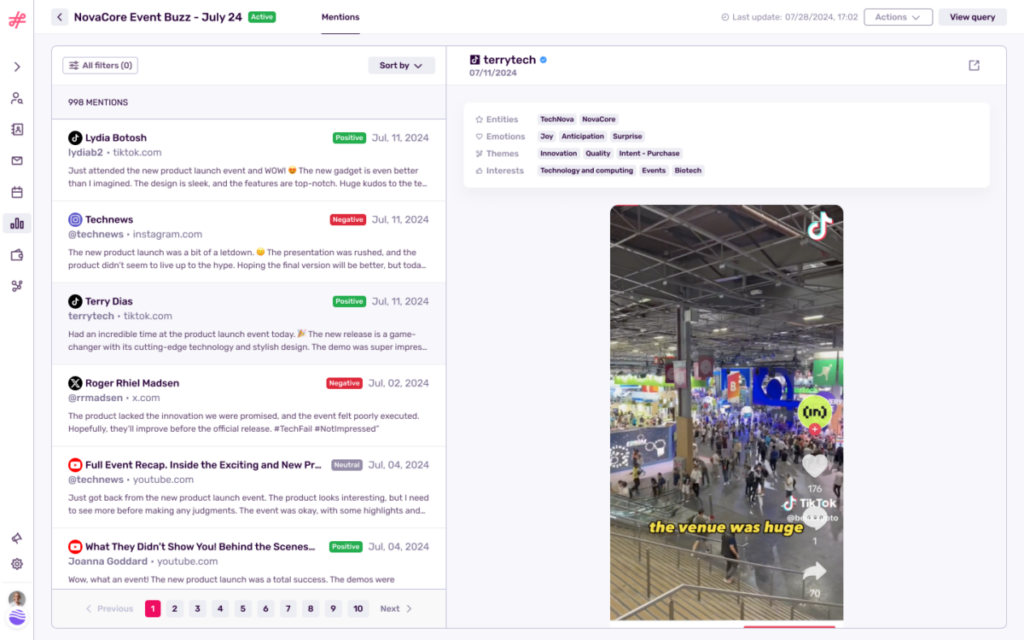
Back in 2014, influencer marketing was an entirely different beast. To put it in perspective, when Influencity launched in November of that year, its primary mission was connecting brands with influential figures—on Twitter. Yes, in those early days, long before Instagram became the visual playground for brands and before Twitter transformed into Elon Musk’s playground, influencer marketing was thriving within the confines of 140 characters. Influencity was right there in the thick of it, evolving alongside the rapidly shifting landscape.
Fast forward to today, and Influencity is no longer just about Twitter. Honestly, Twitter is no longer about Twitter but that’s a different article. Influencity has grown and adapted in ways that are both impressive and necessary for survival in the current digital marketing ecosystem. Our first review of Influencity focused on how the platform had shifted its focus from automatic tweet publications to becoming a powerhouse in influencer discovery. Back then, CEO Daniel Sanchez had envisioned Influencity as a tool for automating tweets by influencers—a good idea at the time, perhaps, but one that didn’t differentiate much from what companies like Hootsuite were offering. The real game-changer, even in those early days, was Influencity’s ability to find relevant influencers for brands, a feature that has only grown stronger over time.
Today, Influencity’s Discover has, like much of the world, moved beyond Twitter, now tapping into the rich data reservoirs of Instagram, TikTok, and YouTube. With more than 200 million accounts indexed, the scale of the platform is truly staggering. But what’s even more impressive is the depth of analysis it provides on each of these influencers. This isn’t just a numbers game: Influencity offers an incredible amount of data on an equally incredible number of influencers—and their audiences—allowing brands to make informed decisions based on real insights.
In our second look at the platform, it’s clear that Influencity hasn’t just rested on its laurels. They’ve continued to innovate, adding powerful new features for social media management, as well. This includes expected social features like a content calendar, inbox and comment management, as well as analytics on social profiles. They go even further, with more advanced functionality like social listening and sentiment analysis. These tools give brands the ability to not only track what’s being said about them across social media but also to understand the tone and sentiment behind those conversations. It’s a natural evolution for a platform that started with just a handful of Twitter influencers and has now grown into a comprehensive solution for managing influencer campaigns across multiple platforms.
From its humble beginnings in 2014, with just “about 100 influencers” on Twitter, Influencity has come a long way. The depth of insights you can gain about influencers and their audiences today is nothing short of remarkable. Combine this with a robust campaign management module and in-depth reporting features, and it’s easy to see why Influencity has become a go-to platform for brands like Samsung and Kellogg’s, as well as agencies like Dentsu and WPP.
Pricing
Influencity’s pricing and the way they structure shows their attempt to appeal to clients both large and small. We’d say the attempt was successful. There are three levels of service, plus a custom option for Enterprise clients with more specific needs.
- Basic, $198/mo ($158/mo, if billed annually) — 1 user can run searches and discover up to 5,000 results per month, save up to 100 influencers in the IRM, analyze up to 30 profiles per month for full metrics and create 1 list to see how influencers perform together and assess audience overlap. Also includes basic social media management functions: content calendar, inbox & comments, bio links, paid ads, and analytics.
- Professional, $398/mo ($318/mo, if billed annually) — 5 users can run searches and discover up to 10,000 results per month, save up to 600 influencers in the IRM, analyze 150 profiles per month for complete metrics, create 100 segmentation lists, 3k monthly outreach emails. Users can also have up to 10 stored campaigns with Shopify integration, 10 campaign reports with up to 200 post analyses per month. Basic social functions as above, plus Social Listening for up to 10k mentions. This package also includes a dedicated customer success team.
- Business, $998/mo ($798/mo, if billed annually) — Unlimited users can run searches and discover up to 25,000 results per month, save up to 2,000 influencers in the IRM, analyze 500 profiles per month for complete metrics, create 100 segmentation lists, and 10k monthly outreach emails. Users can also have up to 50 stored campaigns, run up to 50 campaign reports with 600 post analyses per month. Basic social media features as above, plus Social Listening for up to 30k mentions This package also includes a dedicated customer success team.
Anything larger than that can be customized per requirements or by creating a Custom Bundle.
The Details
The first thing that stands out about Influencity is how simple the interface looks when compared with the sheer breadth of the platform’s capabilities. Here, “simple” isn’t a bad thing: it’s an achievement. Starting with the influencer discovery process, the level of detail Influencity goes to was immediately apparent. The platform offers an almost overwhelming choice of filters, allowing marketers to fine-tune their searches down to the most granular details. Want to find an influencer with a specific audience demographic in a particular country? Easy. Need someone with a certain follower count across Instagram, TikTok, or YouTube? Done. The precision here is not just a feature—it’s the core of the platform’s value.
But it’s not just about finding any influencer. It’s about finding the right one. The platform’s ability to search for influencers whose audience is located in specific regions is a game-changer for marketers focused on geo-targeted campaigns. And the fact that you can apply these filters across multiple social media platforms simultaneously adds another level of efficiency.
One aspect of the platform that’s crucial for anyone managing multiple influencers across different campaigns: profile aggregation. This feature allows users to pull together all of an influencer’s social media accounts into one cohesive profile. Not having to jump between tabs or platforms to get a full picture of an influencer’s reach keeps things easy and efficient to navigate. And it’s not just about follower numbers; the platform digs deeper, analyzing the engagement of those who like and comment on posts. This kind of insight can be useful when you’re trying to gauge the real impact of an influencer’s content. Their followers aren’t their only audience.
Another example of the way Influencity eases a marketer’s day is the platform’s approach to campaign management. The platform made it easy to manage multiple profiles in bulk, a feature that seems almost tailored for those who are juggling several campaigns at once. The ability to create outreach campaigns, complete with personalized email templates, means that tedious tasks can take just a fraction of the time to accomplish. The Shopify integration helps to automate the setup and tracking of sales campaigns, along with creating and spreading discount codes/vouchers using influencers.
Any sales using the codes will be tracked in the campaign reports; the bummer here is that you’ll only learn the number of discount redemptions, but no specific monetary values. This is just one of the limitations in the campaign reporting we noted. The other is that Instagram Story performance isn’t automatically recorded by Influencity’s reporting. All other content types are fine, but if you want to include a Story in your campaign report, you’ll need a screenshot or some other manga accounting of the engagement (which you then record into Influencity).
These criticisms are really the only downside of the reporting—for a platform that provides so much data upfront, we’d expect nothing less for post campaign analysis. The depth of the data available—detailed reports on campaign performance, engagement metrics, and audience demographics—provides a clear picture of what’s working and what’s not. And for those of you who like to keep your metaphorical finger on the proverbial pulse of every campaign, the platform’s dashboards offer an easy-to-read, real-time view of key performance indicators, broken down by profile and publication date.
Finally, the platform’s social media management tools are part of an emerging trend where influencer and social media management are starting to merge. The features are surprisingly robust and preclude the need for running entirely different platform like Hootsuite to manage your social. With a built-in content planner and messaging tool, Influencity makes a great case for never leaving its interface. And you can manage pretty much all your social media accounts from here. The Social analytics dashboard seems heaven-sent: all your social community data—followers, growth, engagement, demographics—are aggregated into a single interface. This includes your website and Google Business listing, too. No need for logging into a dozen different sites to keep tabs on your communities.
But the biggest of the new features might be social listening. Tell the platform what @mentions you want to track, and off it goes collecting and displaying matches. It does more than just list out every mention, though. The sentiment analysis feature understands the tone and emotion behind the words. For brands that live and die by public perception, this is a powerful tool. It’s one thing to know that people are talking about your campaign, but it’s another to know how they’re talking about it. The ability to set up alerts and track specific keywords or hashtags adds a layer of control that’s often missing in other tools.
Conclusion
With the addition of its social media management tools—including social listening—it’s clear that Influencity isn’t just keeping up with the demands of modern influencer marketing, it’s anticipating them. Perhaps the best part of these features is that they’re the icing on the influencer cake: it’s more than you needed to run an influencer campaign, but now that you’ve had it you won’t want to go without,
Every feature is designed with efficiency and effectiveness in mind, from the granular control offered by discovery filters to the robust reporting and analytics that help marketers make informed decisions. Perhaps most impressive is the way it doesn’t just help you scale a campaign, but scale the number of campaigns you can handle at any one time. In an industry where time and details are everything, Influencity empowers marketers to not only execute their campaigns precisely but to do more with less effort.
Influencity
-
Features
-
Ease of Use
-
Reporting

